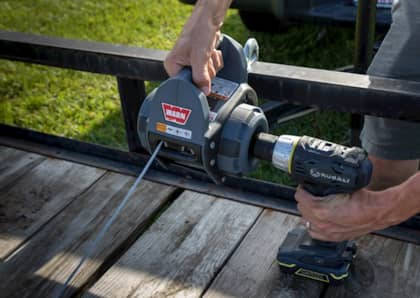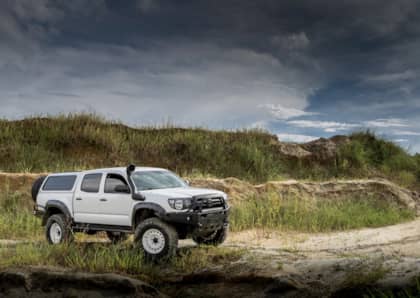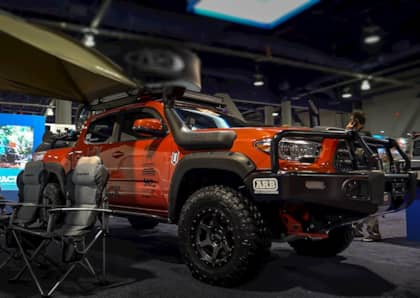Recovery Refresh with Warn's VR10-S Winch
When it comes to recovery gear, you never want to skimp on quality. If you’ve followed our 2008 Toyota Tacoma build, you’ll likely remember when we upgraded the front end with a Premium Series winch front bumper from Fab Fours. At the time, we decided to use an old 8,000-pound winch we had left over from another project. This off-brand winch had worked OK, for a while, but it finally stopped pulling its weight (quite literally).
Since we’ll be using the Tacoma as our shuttle for the 52nd annual Easter Jeep Safari in Moab, Utah, we needed a reliable recovery tool. Our answer, a VR10-S winch from Warn. Part of the more value-oriented line, the VR is designed for recreational ‘wheelers who want the peace of mind of a quality recovery tool, but don’t need the speed and continual performance required of Warn’s top-tier winches. For us it’s perfect, as the compact design fits nicely in our Fab Fours bumper. Plus, given that we typically stick to more scenic overland adventures, we won’t likely find ourselves in a winch marathon on some black diamond trail.
While the video above offers insight into how it performs, we’ve diving even more into the details of the winch in the article below.

Why We Chose the VR10-S
The Warn VR (Vehicle Recovery) series of winches are some of the most attractively priced in the Warn catalog. Despite the lost cost of entry, the only thing cheap about the winch is the price. We picked the VR10-S for its 10,000-pound pulling capacity. This is nearly perfect for our Tacoma when you factor in the suggested 1.5-times multiplier for getting the correct vehicle winch rating.

We opted for the S version as we wanted the ease and light packaging of Warn’s Spydura synthetic rope. Fit with 90 feet of 3/8-inch rope, we’ll have plenty of reach to pull ourselves or others up and out. There’s even an included sleeve that allows you to route the rope over more abrasive obstacles in situations where it may come in contact.

Installing the Winch
While you can see the entire bumper install here, we will say that taking it off at home will require a second set of hands. Another smart move is to place a few layers of tape along the bottom of the grille, headlights, and front fenders. This will be cheap insurance in case the bumper accidently grazes the front end on install or removal.

The VR10-S uses a common 10-inch, four-hole mounting spread. Since the winch already comes pre-wired from the factory, all we needed to do was route the power and ground to the Tacoma’s battery.

A standard hook and Hawse fairlead are included with the winch. The red Warn pull tab is there so you can safely free spool the winch from the vehicle without needing to grab the hook, which can get burrs over time.

How It Performed
It didn’t take us any time to put the winch to work as we came across a very stuck Range Rover on a recent beach outing. Thankfully, the winch had no trouble extracting the luxury SUV. We’re sure we’ll get even more toggle time behind the controller soon.

Changing the Tires
Another change astute readers may notice is the tires. With such a large amount of road miles on the horizon, and more diverse overlanding adventures, we opted to change out the mud terrains for a more refined set of Nitto Ridge Grapplers. Our 285/75R17 fit nicely under the truck and have proven to be excellent in the sand and on the tarmac so far. We’ll log nearly 5,000 miles in just a few weeks as we plan on driving the Tacoma from North Carolina to Moab, Utah, for the Easter Jeep Safari. That’s right, we’re bringing a Toyota to a Jeep party. It’s not the first time either.

Be sure to subscribe here so you can stay up to date on all of our latest off-road adventures.












